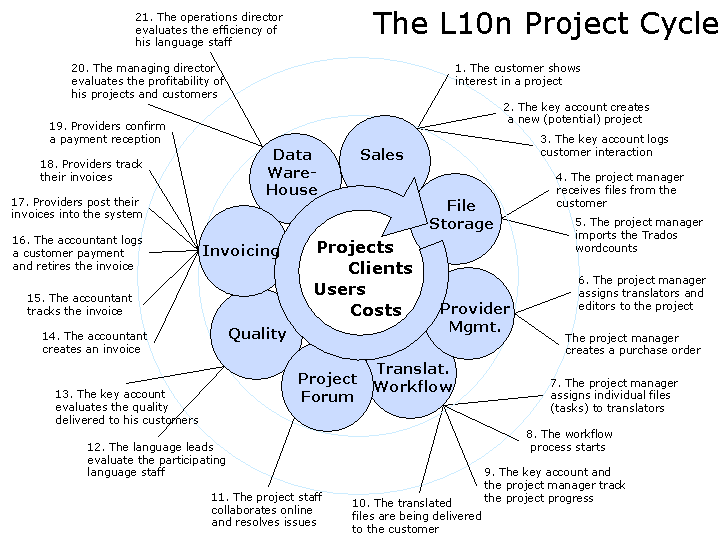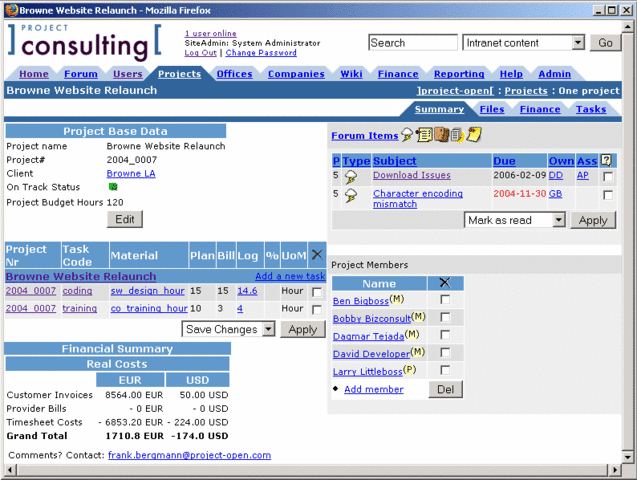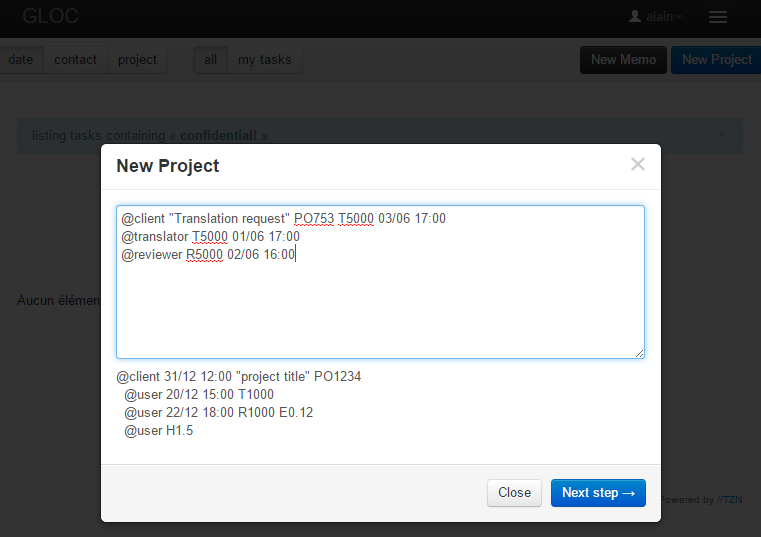Team GLOC is an independent team of freelancers, a concept that seems to confuse some.
- No, we're not an agency, we don't have a sales staff or even full time project managers.
- But yes, of course we can handle large projects with translation and review, shared among multiple translators
How is that?
More work and less time
When I started working in this field, about 15 years ago, I often translated full console games that had 20,000 words to be done in about two weeks.
These days, that's the volume of a partial delivery for a mobile game, and you're lucky if you get one week for it.
So, more text to translate, more quickly. Translation technology has made some good progress, but you can't really squeeze more than 2500 per day from a translator (at least, not if you want to maintain quality and their sanity). You need teams.
The most common model is for the client (usually an agency) to choose the members and put them together on a project basis. This, however, has some drawbacks.
On the client side, a lot of time is required to find and test translators, check their availability and generally micro-manage them.On the translator side, it means dealing with constantly changing partners, with different styles and methodologies. And if frictions arise, it's very hard to define a general line, as all team members are usually on equal footing. And even if things go well, you still need some time to adjust.
Team work
For us, the solution was creating our own team. It's convenient for clients, that deal with us as a single unit, and it's convenient for us, as goals, rules and procedures are long consolidated.
Most importantly, we can have a vision. In the standard model, you may feel like you are just shoveling the required amount of words to make the machine run. But team projects become true collective creations, with a shared vision. Everyone feels involved and motivated, and it really shows in the text.
"What about project management?" you might ask. Guidelines still need to be written and files still need to be shared, collected and sent. This team thing doesn't boil down to simply doing PM work in-house?
Yes and no. Yes because we are doing all the micro-management ourselves, but we share duties and use automation to make it as light as possible.The result is that we don't actually charge project management as a separate service. We only have a word rate for the translator and one for the reviewer. All the budget goes in the text.
Let's see how it works.
Saving time with free tools
Shared email account
While it might be tempting to use something more structured, like a support ticket system, good old e-mail proved just as effective.
We only had to set our account to automatically forward every reply to the account itself and immediately had the perfect point of contact: no matter the day or the hour, clients know that they can write to our address and get an answer. And we know that the whole team is always updated. An handoff mail has arrived? Everybody knows it as it happens (or can quickly catch up on their own).
Shared folders
One of the core tasks in managing a project is sending and receiving files. After automating this with different tools, we settled for Dropbox that allows sharing through Explorer itself.
For those that don't know it, Dropbox creates a special folder on your hard-disk that is constantly monitored and mirrored on the cloud and with the local disks of all team members.
I can create the project folder for a project on my PC, separating the materials into Reference, Source, Work in progress (for our temporary translations) and Delivery (for the finalized files we will send to the client). As soon as I finish, the whole team can access, use and modify the files directly on their machines, without me having to do anything at all.
Compared to the email-and-FTP exchange common in most companies, this improves both efficiency and security, with military-grade 256-bit AES encryption and, if needed, the possibility of retrieving older and deleted files.
Online tracking and scheduling
Similarly to what happened with e-mails, it might be tempting to use agroupware solution like Basecamp or Redmine to schedule and invoice work.There even is a free open-source platform called ]Project Open[ designed specifically for the translation industry. Unfortunately, just like this is their idea of a clear work diagram.

This is their idea of a streamlined interface for working under pressure.

Jokes aside, the main issue we found with these platforms is that they assume you will be working on a single project for years, and thus provide space for dozens of tasks, detailed reference documents, GANTT charts, wikis and so on.
But our usual timeframe is much shorter. A few projects last more than a few months, but hundreds of requests start and end in a few hours.
And if I'm dealing with a 20 minutes job, I don't want to set up a detailed project for that. I just want to tell the others I will be doing it by Skype, open the file and then have it invoiced as quickly and simply as possible.
I don't want ]project open[ for that, I want a todo list with invoicing! And that's exactly what we did with Louandu.
In 2011 we got in touch with the maker of the TaskFreak! online task manager and asked him to rework it into a custom calendar/invoicing solution.
It has been working smoothly ever since. The part we are most proud of? The input mask that lets us record a whole project with a single command and one click (while the system takes care of applying all the relevant rates and mailing everyone).

10 years as a team
Since we officially started working as a team in January 2009, we're not that far from ten years of career together. Ten years spent across hundreds of projects and millions of words while meeting in person only twice.
I guess that's the strongest testament for how a few simple tools can be enough to sustain an effective collaboration, once you find the right members and leave them the chance to really shape the heart and soul of their projects.